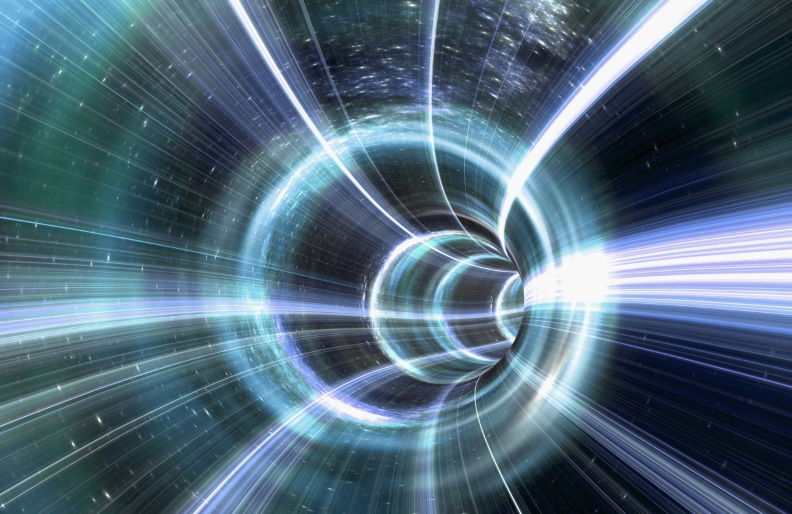Wormholes are a staple of science fiction – but could they be science fact? Surprisingly, a bridge between two distant points in space and time fits into current physics models, although no evidence that they do exist has ever been found. Now, researchers from the University at Buffalo have outlined how we might go about looking for them in our own galaxy.
Star Trek, Dr. Who, Stargate, Interstellar, Sliders and countless other movies, TV shows, novels, and video games have all dealt with wormholes in some way. Usually, they’re depicted as tunnels that instantly connect two points separated by huge distances, allowing for a convenient way for ships and people to travel across the cosmos. Sometimes they allow for time travel, and other times characters use them to slide into other universes or dimensions.
While they might seem like little more than handy narrative devices, wormholes are surprisingly plausible in the real world. They’re consistent with Einstein’s general theory of relativity and could conceivably offer the same kinds of benefits as their fictional counterparts – namely, faster-than-light space travel, time travel or jumps through the multiverse.
Of course, just because their existence is technically possible doesn’t mean they actually exist. So far, no astronomers have ever spotted any kind of evidence of a wormhole, but maybe that’s because we don’t know what to look for. Now, a team of scientists at the University of Buffalo has outlined how and where we might find that evidence.
The team suggests that the best place to start looking is the center of the Milky Way galaxy. That’s where a supermassive black hole called Sagittarius A* lurks, providing the kind of extreme gravitational environment that a wormhole requires. And if there is a wormhole there, it should have a noticeable effect on nearby stars.
“If you have two stars, one on each side of the wormhole, the star on our side should feel the gravitational influence of the star that’s on the other side,” says Dejan Stojkovic, an author on the study. “The gravitational flux will go through the wormhole. So if you map the expected orbit of a star around Sagittarius A*, you should see deviations from that orbit if there is a wormhole there with a star on the other side.”
The researchers single out a star called S2, which orbits the black hole, as the best bet. Perturbations in the expected path of this star could provide the first evidence of wormholes if it’s observed for a long-enough period of time.
That said, there are a few problems with the idea. Current technology most likely isn’t powerful enough to detect the kind of disturbances in S2’s orbit that might indicate a wormhole, but the team says that advanced techniques on the horizon could do the trick.
Another major issue though is that even if some weirdness is found in the orbit of S2, it doesn’t necessarily mean a wormhole is to blame. There could be other explanations that would need to be investigated.
But even if we do discover evidence that wormholes exist, they might not be the incredible shortcuts sci-fi promises. Although technically traversable, they probably aren’t stable enough to let large objects through.
“Even if a wormhole is traversable, people and spaceships most likely aren’t going to be passing through,” says Stojkovic. “Realistically, you would need a source of negative energy to keep the wormhole open, and we don’t know how to do that. To create a huge wormhole that’s stable, you need some magic.”
The final nail in the coffin is the little matter of the distance between Earth and the center of the galaxy – over 26,000 light-years. That’s a long way to go for a so-called “shortcut.”
The research was published in the journal Physical Review D.
This article was originally published on New Atlas and was written by
